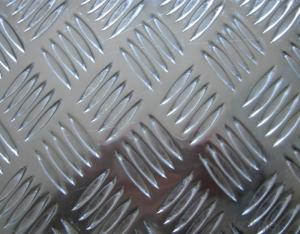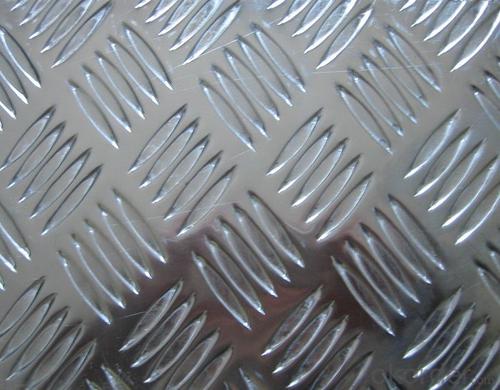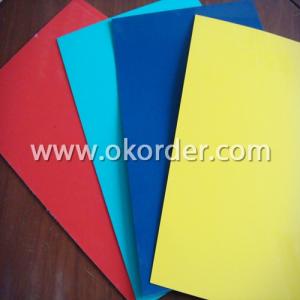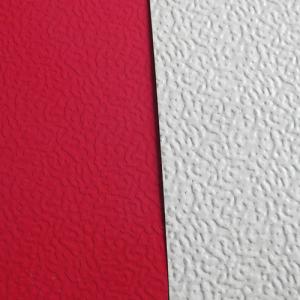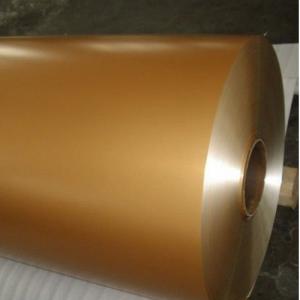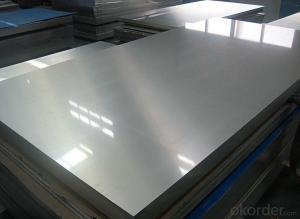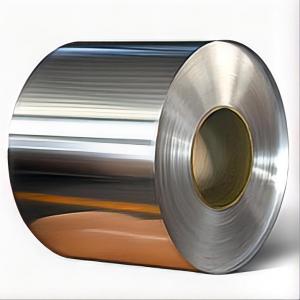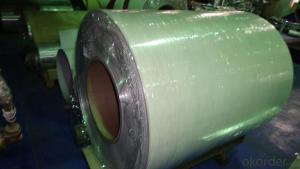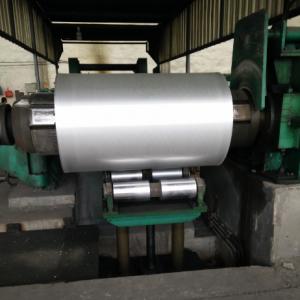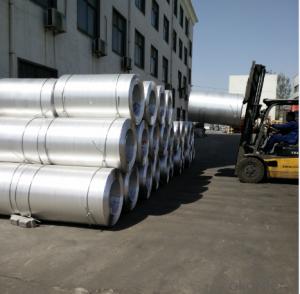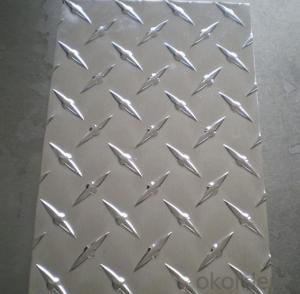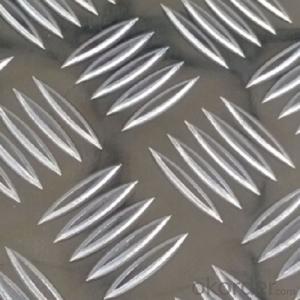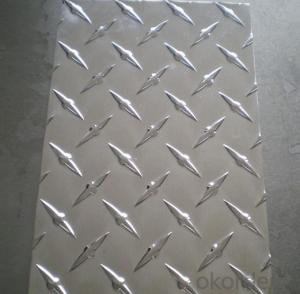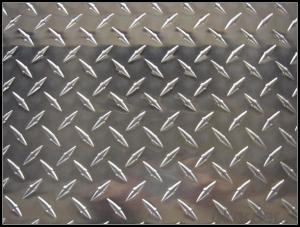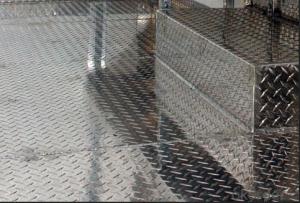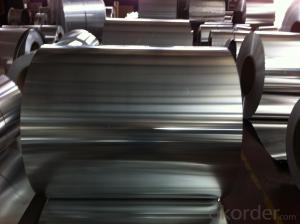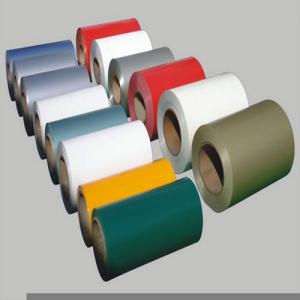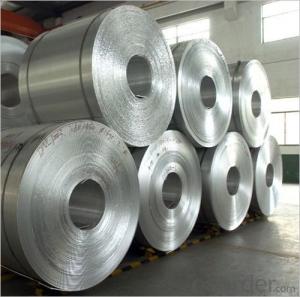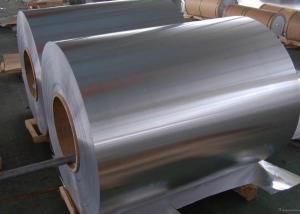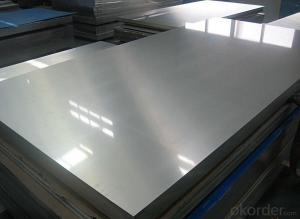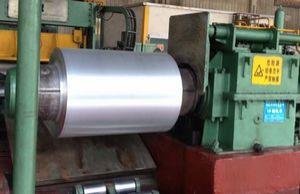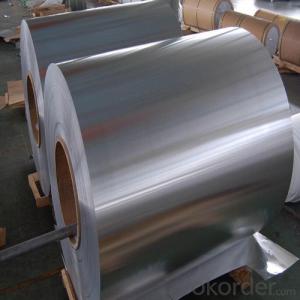Aluminium Checker Plate for Boat Deck Use
- Loading Port:
- Shanghai
- Payment Terms:
- TT OR LC
- Min Order Qty:
- 2.5
- Supply Capability:
- 5000 m.t./month
OKorder Service Pledge
OKorder Financial Service
You Might Also Like
Specification
Aluminium Checker Plate for Boat Deck Use
l Product Information
1. Alloy number: 1100, 3003,1050,1060, 5052.
2. Temper: H14, H18, H12, H16, H22, H26, H24.
3. Thickness: 0.8-10.0mm. width: 20-1600mm.
4. Tolerance: thick+/-0.02mm, width +/-0.5mm.
5. Pattern: Two bars, Three bars, Five bars and Diamond.
6. Surface brightness: bright surface or normall surface.
7. Application: trailer, truck, decking, flooring, stairs, steps, building industry.
8. Loading port: Shanghai or main port.
l Packaging & Delivery
Packaging detail: Standard seaworthy exporting carton, Wooden pallets, waterproof paper and plastic coverage or as customer's requirements
Delivery detail: about 25 days from received original L/C or advance payments
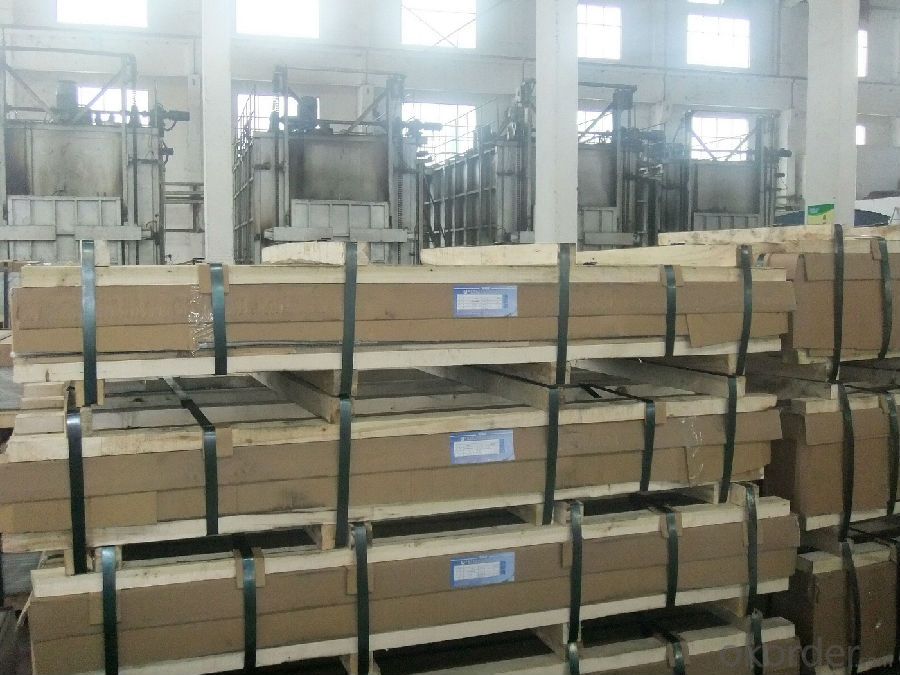
l Company Profile
CNBM International Corporation, China National Building Materials (Group) Corporation, is one of the largest companies in China building material & equipment industry, with 42,800 employees and sales in 2005 of US Dollar 4.395 billion. In 2006, China National Building Material Company Limited was listed on Hong Kong Stock Market with the stock code as 3323. |
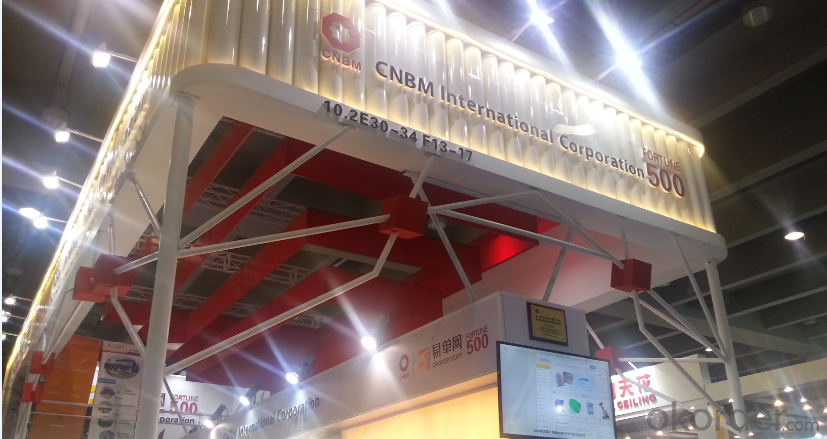
l CNBM World Wide
l Product Images
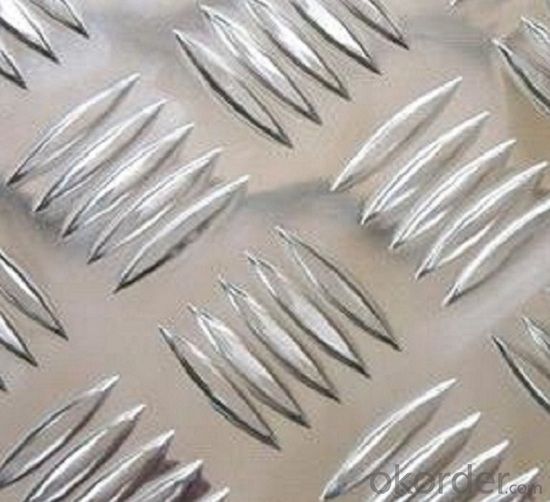
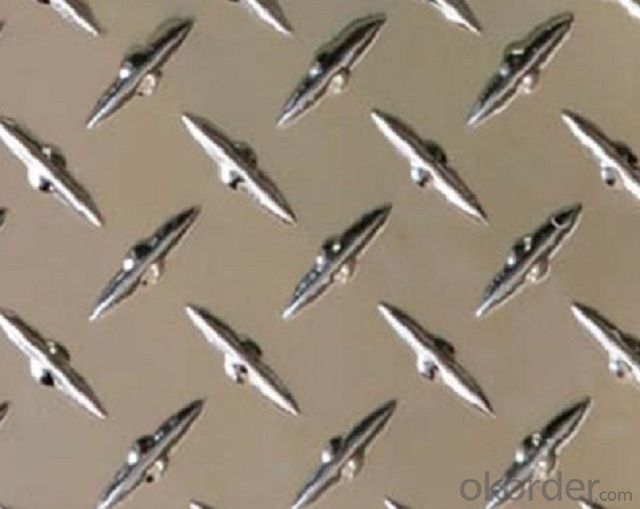
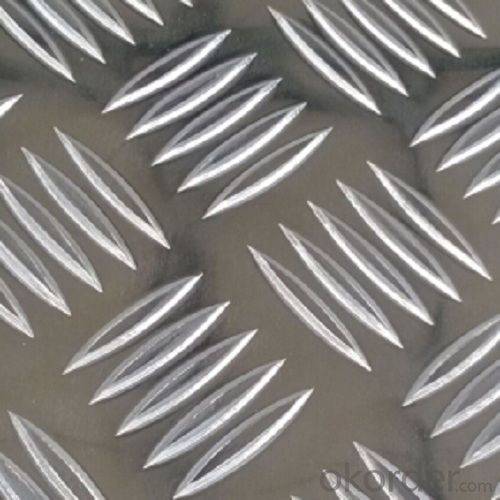
l Certificates
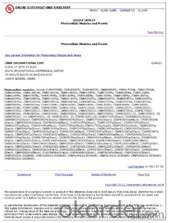
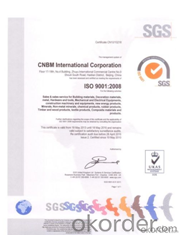
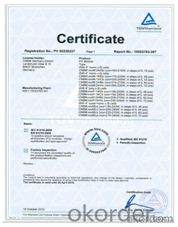
l FAQ
Q: Do you provide free samples?
A: Yes, free samples will be sent to you on freight at destination.
Q: Can I get your latest products catalogue?
A: Yes, it will be sent to you in no time.
Q: What is the MOQ?
A: 2.5 tons
Q: What are your payment terms?
A: We accept L/C, T/T
- Q: I had a small exclusive group of friends in high school of nine people. For Christmas every year we'd have a get-together and exchange gifts. Now, I was never fond of the, He got something different! or, Why did she get a book and I got a scarf? So I would always give my friends each the same thing, but personalized for them.One year I made aluminum foil sculptures for them because I was especially poor...And they loved them! They ranged from a dragon, an elephant, a pacifier, to a tiny martini glass. I was really surprised that everyone liked them.So do you think that I could make these and sell them at craft fairs? I don't know...it's just something I've been thinking about recently and wondering if it would work.
- It would have to be something they could not make by themselves. It would have to be durable. It would also help if the sculpture is useful in some way. Hey, I am just telling you what sells, from long experience. Maybe you would like to teach a class in foil sculpture instead. Try offering a class on Craigslist and see if anyone signs up. Or you could do videos or a pamphlet and sell those on Ebay. .
- Q: I have a muffin pan made of aluminum foil and I do not know if i can put it in the oven to cook some muffins. Many sights say it will melt but they say that about putting a sheet of foil at the bottom of the oven for a long time. I just want it to be in their for half an hour to make muffins.
- Aluminum Foil In Oven
- Q: What specific tools are required for handling and working with aluminum coils?
- <p>Working with aluminum coils typically requires specialized tools to ensure safety and efficiency. These include cutting tools like metal snips or shears designed for aluminum, which are crucial for cutting the coils without damaging them. Additionally, a coil carrier or uncoiler is necessary for handling and unrolling the coils without causing injury or deformation. Protective gear such as gloves and safety glasses is also essential to prevent injuries from sharp edges or debris. For more precise work, a metal straightener or leveling machine may be needed to correct any warping in the aluminum coils.</p>
- Q: Can aluminum coils be used in the manufacturing of beverage cans?
- Yes, aluminum coils can be used in the manufacturing of beverage cans. Aluminum is a commonly used material for manufacturing beverage cans due to its various advantages. Aluminum coils are typically rolled into thin sheets, which are then cut, formed, and coated to create the final can shape. These coils provide a lightweight, durable, and corrosion-resistant material that is suitable for storing and preserving beverages. Additionally, aluminum is a highly recyclable material, making it an environmentally friendly choice for beverage can production.
- Q: What is the structure of Aluminium Chloride at 180, 192.4 (melting point) and 200 degrees celsius? When does it exist as an ionic lattice and when as a Al2Cl6 dimer?
- Aluminium chloride sublimes (turns straight from a solid to a gas) at about 180°C. If it simply contained ions it would have a very high melting and boiling point because of the strong attractions between the positive and negative ions. The implication is that it when it sublimes at this relatively low temperature, it must be covalent. The dots-and-crosses diagram shows only the outer electrons. Hope that help Check here for more information; www.chemguide .uk/atoms/bonding...
- Q: What is the typical yield strength of aluminum coils?
- The typical yield strength of aluminum coils can vary depending on the specific alloy and temper used. However, for many common aluminum alloys, the yield strength typically ranges from 15,000 psi to 40,000 psi (100 MPa to 275 MPa). It is important to note that this is a general range, and there can be variations within different aluminum coil products. Additionally, the yield strength can also be influenced by factors such as the thickness and processing conditions of the coil.
- Q: Are aluminum coils suitable for solar panel applications?
- Yes, aluminum coils are suitable for solar panel applications. Aluminum is a lightweight, durable, and corrosion-resistant material, making it an ideal choice for solar panels. It provides excellent heat dissipation, ensuring optimal performance and efficiency of the solar panels. Additionally, aluminum is readily available and cost-effective, making it a popular option in the solar industry.
- Q: How do aluminum coils compare to other non-ferrous metals like titanium?
- Aluminum coils and other non-ferrous metals like titanium have distinct characteristics that differentiate them in terms of their properties and applications. While both metals are non-ferrous and share similarities such as excellent corrosion resistance and lightweight properties, they have several differences that set them apart. Firstly, aluminum is more commonly used and readily available compared to titanium. It is also more affordable, making it a cost-effective choice for many industries. Titanium, on the other hand, is relatively rare and expensive due to its complex extraction process, limiting its widespread use. In terms of strength, titanium is significantly stronger than aluminum. Titanium alloys possess exceptional strength-to-weight ratios, making them suitable for applications where high strength is a requirement, such as aerospace and military industries. Aluminum, although not as strong as titanium, is still widely used in various industries due to its good strength-to-weight ratio. Another key difference lies in their melting points. Titanium has a significantly higher melting point compared to aluminum, making it more resistant to high temperatures. This characteristic makes titanium ideal for applications involving extreme heat, such as aircraft engines and components for the chemical industry. Aluminum, on the other hand, has a lower melting point, making it more suitable for applications that require good thermal conductivity, like heat exchangers and electrical wiring. Furthermore, titanium has superior resistance to corrosion compared to aluminum. While aluminum is known for its excellent corrosion resistance, titanium surpasses it in terms of durability, especially in highly aggressive environments, such as saltwater or chemical exposure. This property makes titanium a preferred choice for marine applications, offshore structures, and chemical processing equipment. In summary, aluminum coils and titanium are both valuable non-ferrous metals with unique properties and applications. Aluminum is widely used due to its affordability, availability, and good strength-to-weight ratio, while titanium offers exceptional strength, high-temperature resistance, and superior corrosion resistance at a higher cost. Understanding their differences allows industries to choose the most suitable metal for their specific needs and requirements.
- Q: Aluminum is soft, so I have a roll coating, the material is very soft, 0.7*970, into 2100, it can be processed
- The plate: cold rolled hot-rolled plate hot rolling plate, color steel plate roll roll coating color coated plateThe coating: hot galvanized coil electro galvanized coil heat tinplate tinplate chrome plate roll roll roll plastic composite steel plate other coated steel tinplate volume
- Q: Is it possible to use aluminum coil for crafting decorative items?
- <p>Yes, you can use aluminum coil to make a decoration piece. Aluminum is a versatile material that is lightweight, durable, and easy to manipulate. It can be bent, twisted, or cut into various shapes to create unique decorative items. Common uses include making sculptures, wall art, and even jewelry. Due to its malleability and resistance to corrosion, aluminum coil is an excellent choice for decorative purposes, especially for outdoor decorations where weather resistance is important.</p>
Send your message to us
Aluminium Checker Plate for Boat Deck Use
- Loading Port:
- Shanghai
- Payment Terms:
- TT OR LC
- Min Order Qty:
- 2.5
- Supply Capability:
- 5000 m.t./month
OKorder Service Pledge
OKorder Financial Service
Similar products
Hot products
Hot Searches
Related keywords
